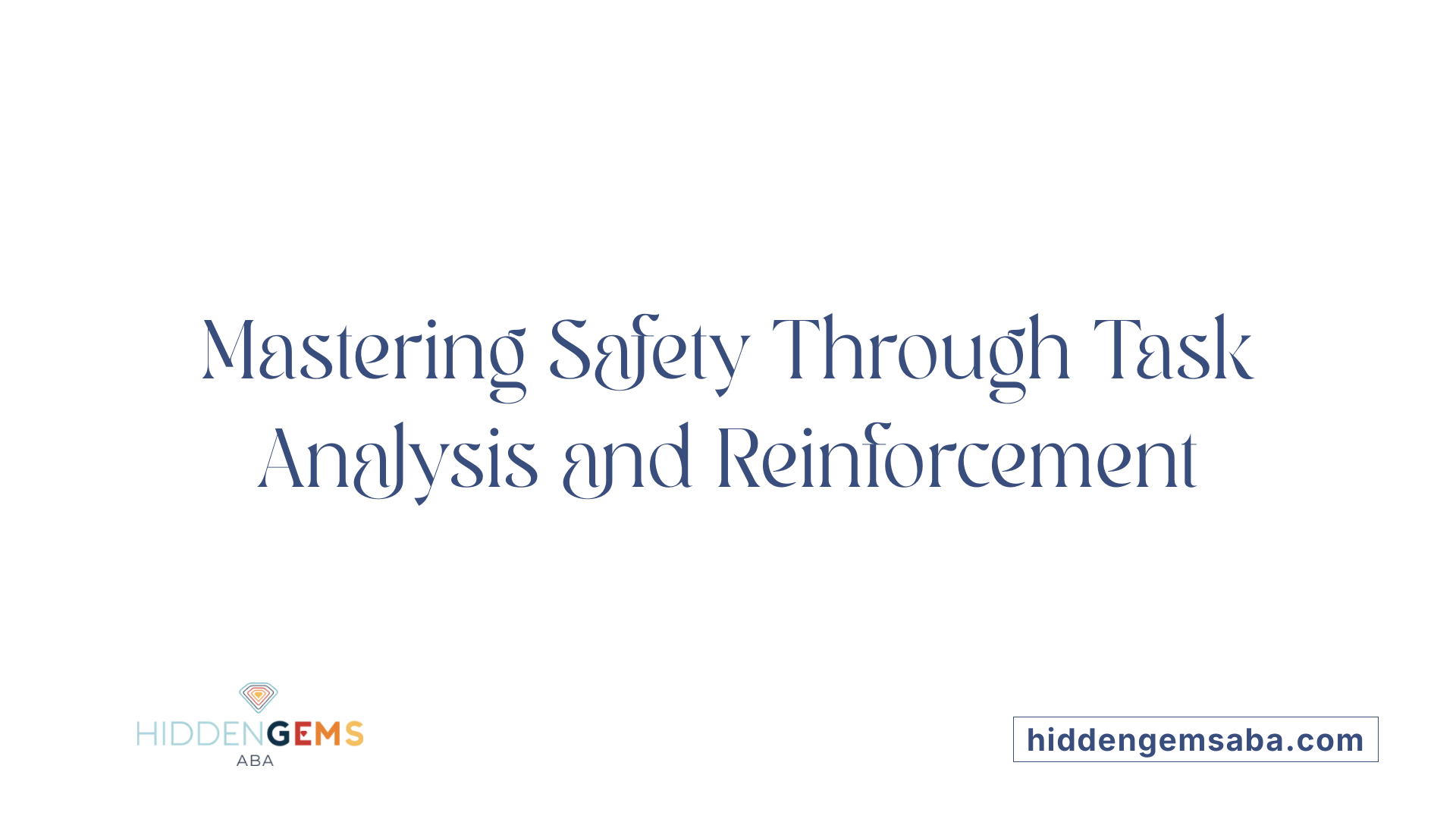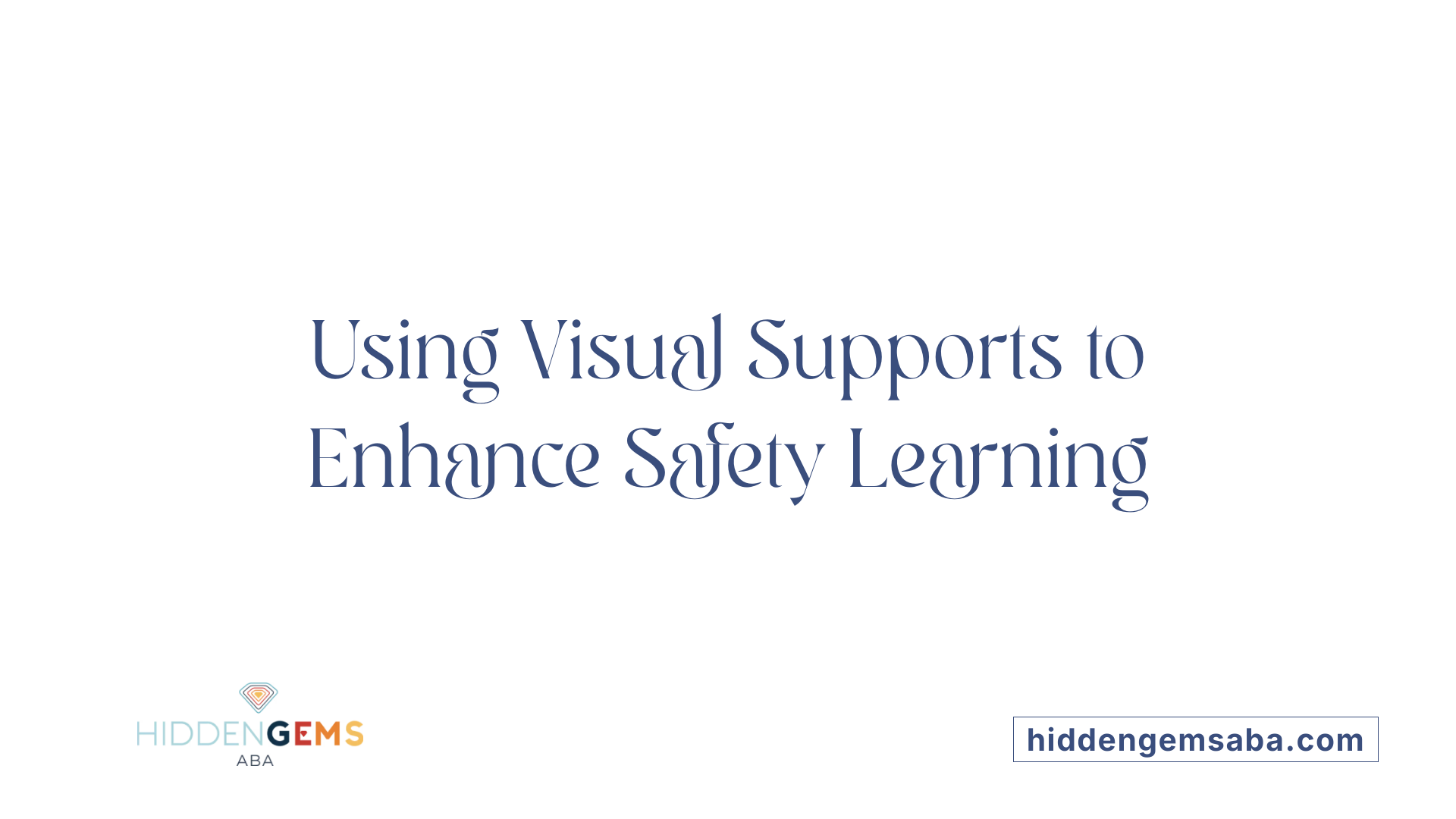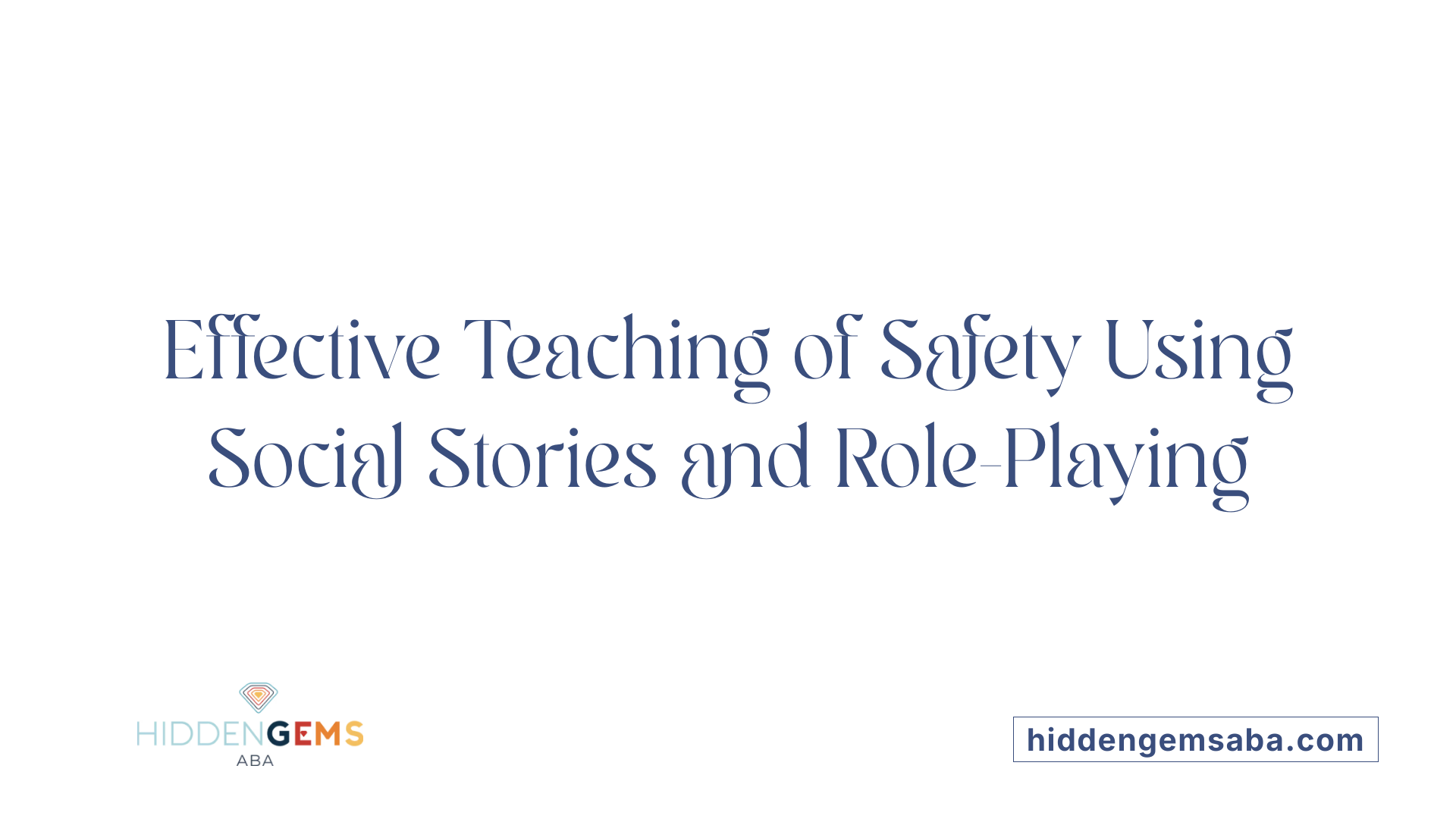Ensuring Safety Through Structured Learning
Applied Behavior Analysis (ABA) is a highly effective, evidence-based approach tailored to help children with autism develop vital safety skills. By breaking down complex safety concepts into manageable steps and reinforcing positive behaviors, ABA enables children to navigate their environments confidently and safely. This article explores how ABA therapies employ specialized methods and strategies to promote safety awareness, ultimately supporting independence and well-being.
Core Techniques in Developing Safety Skills
What methods and techniques are used in ABA therapy to develop safety skills?
ABA therapy employs several effective strategies to help children with autism develop vital safety skills. One such approach is behavioral skills training (BST), which involves giving clear instructions, modeling expected behaviors, practicing skills through role-play, and providing feedback. This structured method ensures children learn safety responses systematically.
In addition, in situ training (IST) places children in real or simulated environments where safety threats might occur. This real-life practice helps children apply their skills contextually, building confidence and independence in everyday settings.
Visual supports are also central to teaching safety. Social stories, visual schedules, cue cards, and video modeling serve as visual aids that clarify safety routines and rules. These tools enhance understanding and help children recall safety procedures more reliably.
Role-playing exercises, along with repetition and peer modeling, further reinforce safety skills. Children repeatedly practice how to respond during emergencies or when facing unfamiliar social situations, which helps solidify their ability to act appropriately.
Ensuring consistency across different settings is critical. Collaboration with caregivers and educators guarantees that safety reinforcement is continuous, aiding in skill generalization.
Practical community outings and safety devices like alarms or GPS trackers are implemented to promote real-world application of safety skills. These measures, combined with ongoing practice, foster independence and heighten safety awareness, empowering children to navigate their environments confidently.
| Technique | Description | Purpose |
|---|---|---|
| Behavioral Skills Training (BST) | Instruction, modeling, rehearsal, and feedback | Teaching specific safety responses |
| In Situ Training (IST) | Real or simulated environment practice | Applying skills in actual settings |
| Visual Supports | Social stories, cue cards, video modeling | Clarifying safety concepts |
| Role-Playing | Practice scenarios with peers or adults | Reinforcing safety responses |
| Community Outings | Supervised visits to public places | Generalizing safety skills in real life |
Breakdown and Reinforcement of Safety Behaviors

What is task analysis in ABA therapy?
Task analysis is a foundational technique used in ABA therapy to break down complex safety skills into simple, manageable steps. For example, teaching a child how to cross the street safely involves dividing the process into smaller tasks—stopping at the curb, looking both ways, listening for traffic, and then crossing. This method makes learning safer and less overwhelming by focusing on one step at a time.
How are reinforcement strategies used to teach safety?
Positive reinforcement plays a crucial role in instilling safety behaviors. When a child demonstrates a safety skill, like appropriately seeking help when lost, they receive immediate praise or tangible rewards, such as stickers or tokens. These rewards motivate the child to repeat the safe behavior, helping it become a consistent part of their routine.
What role do visual supports and prompts play?
Visual supports, including checklists, picture schedules, and cue cards, are effective tools for guiding children through safety routines. They serve as visual reminders of what to do, especially for children with communication challenges. For instance, a picture schedule showing steps for crossing the street helps children understand and remember each part of the safety process until they can perform it independently.
How does collaboration enhance safety skill development?
Collaborative efforts among BCBAs, parents, teachers, and caregivers are essential. Consistent reinforcement and practice across various settings help children generalize safety skills. Caregivers are often provided with resources and guidance to practice safety routines at home or in community settings, which reinforces learning and builds confidence.
Why is safety skill development important in ABA therapy?
ABA therapy offers numerous benefits for children with autism regarding safety awareness. It teaches essential skills such as responding appropriately in emergencies, understanding safety routines, and sharing personal information when needed. Through social stories, visual cues, modeling, and role-playing exercises, children can learn to navigate their environments more safely.
These individualized interventions reduce risky behaviors, promote independence, and empower children with autism to handle safety situations confidently. Techniques like behavioral skills training (BST), along with consistent practice and positive reinforcement, significantly improve safety comprehension and responsiveness.
Mastering safety skills not only protects children but also fosters their self-confidence and ability to participate actively in their communities. Overall, ABA therapy enhances safety awareness, diminishes hazards, and improves quality of life for children on the autism spectrum.
The Role of Visual Supports and Social Stories

How can educators effectively teach safety skills to children with autism using ABA techniques?
Using visual supports and social stories is an effective way to teach safety skills to children with autism through ABA methods. Visual aids such as checklists, cue cards, and picture schedules help children understand safety routines clearly and remember steps to stay safe.
Behavioral Skills Training (BST) and In Situ Training (IST) are proven techniques. These approaches involve giving straightforward instructions, modeling desired safety behaviors, practicing through role-play, and providing timely feedback. Repeated practice in natural settings helps children learn to respond correctly in real-world situations.
Involving parents and caregivers in training ensures consistency across home, school, and community environments. Tailoring safety goals within the child's Individualized Education Plan (IEP) makes the instruction relevant to their specific needs and daily routines.
Teaching children to recognize safe adults, cross streets safely, and dial emergency numbers like 911 is especially important. As children with autism grow older, they should also learn to handle more complex safety situations.
Using multiple exemplars and real stimuli encourages generalization, so skills are not limited to specific settings. The combination of visual supports, modeling, rehearsal, and ongoing assessment helps children develop independence and confidence in staying safe.
By integrating these strategies, educators can ensure children with autism learn essential safety skills effectively, leading to greater safety and self-reliance in their communities.
For more detailed strategies, searching for "Using visual supports to teach safety skills to children with autism" can provide additional examples and resources.
Teaching through Role-Playing and Social Stories

Why is the development of safety skills important for children with autism, and how does ABA facilitate this?
Safety skills are crucial for children with autism because they foster independence and help prevent accidents or harmful situations. Equipping children with these skills enables them to respond effectively to various threats, such as wandering, stranger danger, water hazards, and online risks.
ABA therapy supports safety skill development through structured teaching methods like Behavioral Skills Training (BST). This approach involves clear instructions, modeling the desired behavior, rehearsing the skill through role-playing, and providing feedback to improve. For example, children learn how to cross the street safely by practicing in controlled environments with guidance and reinforcement.
In situ training takes this a step further by practicing safety skills in real-world settings, ensuring skills transfer from therapy to everyday life. Tailoring safety programs to each child's age, developmental level, and family goals ensures relevance and engagement. Safety lessons often include preventing abduction, seeking help from trusted adults, recognizing safe individuals or environments, and understanding emergency procedures.
Repeated practice using reinforcement strategies like praise or tangible rewards boosts retention and helps children generalize safety skills across different settings. This comprehensive approach helps children live safer, more independent lives, reducing risks and building their confidence in navigating daily activities.
Promoting Safety Through Generalization and Caregiver Involvement

How can ABA therapy promote the generalization of safety skills?
In ABA therapy, ensuring that safety skills are applicable across various environments and situations is essential. Strategies like teaching skills in multiple settings, using different instructors, and incorporating varied scenarios help children transfer learned safety behaviors beyond therapy sessions. Repeated practice in real-life contexts reinforces these skills, making them more natural and automatic.
Systematic approaches like In Situ Training (IST) involve practicing safety skills in the actual environment, such as grocery stores or parks, to strengthen generalization. Behavioral Skills Training (BST), which combines instruction, modeling, rehearsal, and feedback, is used extensively to teach safety routines effectively. Over time, these methods build children’s confidence and ability to apply safety behaviors independently.
Why is caregiver collaboration vital in teaching safety skills?
The active involvement of caregivers is crucial for reinforcing safety skills outside of therapy. Therapists provide resources, guidance, and specific strategies that caregivers can implement at home and in community settings. Consistent messaging across home, school, and community environments ensures children understand and follow safety routines reliably.
Caregivers assist in observing children’s progress and provide feedback that helps tailor safety lessons to individual needs. They also participate in training sessions, role-playing exercises, and safety scenarios, which enhances the child's understanding and confidence in applying safety skills.
How does consistency across different environments support safety skill development?
Consistency is fundamental in helping children with autism internalize safety behaviors. When safety lessons, cues, and expectations are maintained across home, school, and community, children receive clear, reinforced messages. This uniform approach reduces confusion and promotes the transfer of skills to everyday settings.
Caregivers, teachers, and community providers work together to synchronize instructions and reinforcement strategies. Using visual supports like schedules, cue cards, and social stories across settings further reinforces safety knowledge. The cohesive efforts ensure children develop the independence and self-protection skills needed to navigate their environments confidently.
The Long-Term Impact of Safety Skills Training

Why is the development of safety skills important for children with autism, and how does ABA facilitate this?
Safety skills are essential for children with autism because they lay the foundation for independence and help prevent harm. Children with autism may not instinctively recognize dangerous situations or know how to respond appropriately, which can increase their risk of injury or becoming lost. Developing these skills enables children to navigate their environments more confidently and securely.
Applied Behavior Analysis (ABA) is a proven approach to teaching safety skills. It uses structured methods like Behavioral Skills Training (BST), which involves clear instructions, modeling safe behaviors, practicing through role-playing, and providing feedback. In addition, ABA incorporates in situ training—real-world practice in community settings—to reinforce learned skills.
Each safety program is personalized to suit the child's age, needs, and family goals. For example, teaching a child abduction prevention, how to seek help, recognize safe adults, and understand community resources are common safety skills included in individualized plans. These tailored strategies ensure that learning is relevant and effective.
Consistency is vital. Repeated practice using various reinforcement methods, such as praise or tangible rewards, helps children retain safety behaviors and apply them in different situations. Over time, this leads to increased resilience, safer choices, and greater independence.
Overall, safety skills training through ABA significantly contributes to the long-term well-being of children with autism. It empowers them to respond appropriately to potential threats, navigate their communities safely, and develop a sense of confidence and independence that benefits them throughout their lives.
Empowering Children for Safe and Independent Lives
Incorporating ABA therapy to develop safety skills in children with autism offers comprehensive, individualized strategies that promote independence, resilience, and confidence. Through structured techniques such as task analysis, reinforcement, visual supports, role-playing, and caregiver collaboration, ABA helps children understand and respond to a variety of safety challenges. Ensuring safety skills are generalized across settings and reinforced consistently is essential for the long-term well-being of children on the autism spectrum. Ultimately, these interventions foster safer participation in community life, empowering children to live more autonomous and fulfilling lives.
References
- How ABA therapy can help children with autism develop ...
- Understanding ABA ASD: Key Benefits for Autism Treatment
- Tips for Teaching Safety Awareness to Children with Autism
- Understanding Community Safety Skills From ABA Therapy
- Applied Behaviour Analysis (ABA) and autistic children
- The Top 10 Reasons Children With Autism Deserve ABA - PMC
- Applied Behaviour Analysis (ABA) and autistic children
- How To Teach Safety Skills To Children With Autism: 10 Effective ...





